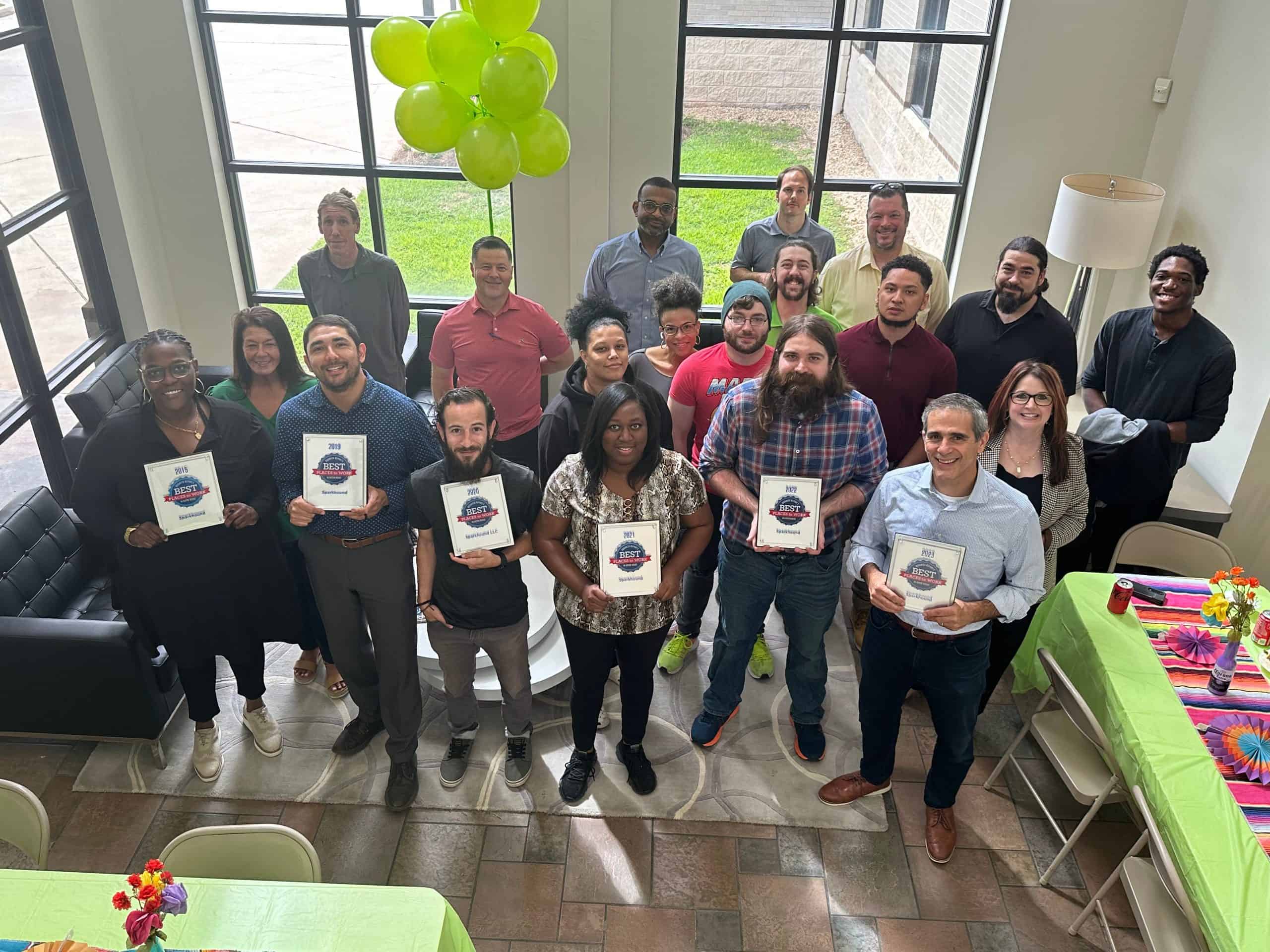Where are you in your RPA journey?
Khader Shakir
August 30, 2022
5 minute read

Robotic Process Automation (RPA) has caught the imagination of business leaders and garnered huge investments in the past few years due to its ability to enable business users with limited programming experience to automate process quickly and realize huge business benefits – Improved Operating Cost, Better Customer Experience, Compliance, etc.
While these projects cannot replace the enterprise-level technology for mission-critical processes and routines, they can take on low-impact processes, reduce the IT burden, and accelerate value creation by empowering employees with easy-to-learn RPA software.
Setting up your own RPA solution can be tricky, as there are many factors to account for. Below we cover the journey at a high-level and some pitfalls you can avoid by working with Sparkhound.
Robotic Process Automation Journey
Majority of the organizations irrespective of their size, be it a Fortune 2000 or SMB, typically follow the “bottoms-up” approach. They start small within a specific function, like Finance, HR, Procurement, etc., that are rule-based. Through a limited deviation from the set process, organizations showcase the success and try to replicate RPA to other parts of the organization.
As these departments and organizations mature, they seek out advanced tools like Intelligent Process Automation (Combination of AI/RPA), HyperAutomation (E2E Process Automation), Custom Automation, Low-Code / No-Code Automation to address use cases that are considered too complex for the basic RPA to address.
However, there can be many potential slip-ups when scaling up their operation.
Accelerated RPA Adoption – Pit Falls
It is common for departments leaders to increase the automation investment basis the initial success, for other departments and eventually the organization to follow suit. There is suddenly a proliferation of unmonitored, siloed automation bots running across the organization that could turn your RPA journey into a nightmare.
Disruption to Related Processes
Automation opportunities are mostly identified by process Subject Matter Experts (SMEs), like AP/AR Analyst, HR Analyst, Back Office Associate, etc. While they might be experts in the process that is under their direct scope, they might be separated from the upstream/downstream process that would be impacted. Situations like these usually results in gains to the process in scope but a whole lot of rework to related processes.
Decentralized License Procurement and Bot Utilization
While the bot licenses are a fraction of the price of a full-time resource, be it domestic or low-cost location, the licensing and the upkeep cost could easily spiral out of control especially when departments taste early success and double down their bets independently. The departments procure licenses, duplicate purchases from multiple RPA Software vendors capable of delivering the similar outcomes, invest in varying tools (AI/Cognitive Services, Process/Task Mining, RPA, RDA Licenses) from various RPA Software vendors for the lack of an Holistic Enterprise Automation Strategy.
The bot utilization management is another area that is often overlooked, this can tremendously help unlock the economies of scale and help reallocate the budget to advance the automation journey benefit taking a holistic enterprise approach.
Broken Bots and Lack of Formal Support Structure
RPA bots usually operate at the presentation layer, mimicking how an employee would go about executing a task. Simply put, a bot scrapes data from various screens, performs the desired function per the process, and updates target data fields. Changes to the underlying system or its presentation layer will cause the bot to malfunction, fail, or execute incorrectly. It is common for departments to invest in building bots but assume that the same developers will also support these bots for life.
Bot developers usually have a day job (AP/AR Analyst, HR Analyst, etc.) and simply don’t have the time to maintain their bot’s productivity. Additionally, they are not expected to follow the coding best practices as a Developer in the technology department would. It is thus common to that the bots are eventually rendered obsolete with the attrition of the bot developer. It is thus critical to consider the investment towards a formalized support structures to maintain, update and upkeep the automation programs to realize the desired business value.
Bots Not Fixing Faulty Processes and Automate Defects
Bots will perform the action exactly how it is programmed to, so if a program is built to automate a process that is broken, inherently faulty or consistently yields defects – the bot will accelerate this exact faulty process and throw out the defects at a faster pace and the department will be buried with rework that needs be executed manually. So, what should have yielded productivity gains ends up being the exact opposite and delivers poor customer experience. It is a best practice to evaluate the process for deficiencies, fixing or re-engineering it before building automations.
Increased Risk Due to Non-Compliance
While RPA can be leveraged to improve information risk and compliance by letting the bot handle processes that deals with personal and sensitive data like social security, credit card. The level of secure handling of such information is dependent on the RPA developer. Sensitive data and bot passwords handled by the bots, may be exposed to hackers if the enterprise/ industry specific information security policies and procedures are not incorporated as part of the code. The RPA password are often exchanged so that they could be reused, if this vulnerability is exploited it can provide the intruder access to the sensitive data as well as access to the network, which can be further exploited. These incidents can be extremely expensive to overcome and cost several hundred times the productivity benefit. It is thus imperative that RPA bots be built to standards and periodically audited for information security risks and mitigated.
A business of any size and industry can automate its processes to significantly improve performance. With the right RPA solution, you can expect an acceleration in project timelines and improved operational efficiency. Reach out to our experts today to get started.


